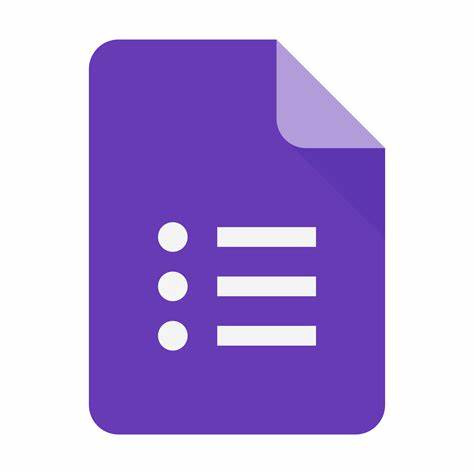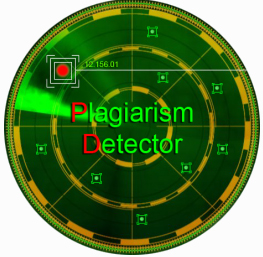APLIKASI PENGENALAN TINGKAT KEMATANGAN BUAH TOMAT MENGGUNAKAN FITUR WARNA HSV BERBASIS ANDROID
Abstract
Tomatoes ripen relatively quickly, so tomato farmers must be able to properly sort the tomatoes for distribution. Farmers typically sort the tomatoes by hand. Tomato farmers are generally experts at manually sorting tomatoes, but humans have many limitations, such as being tired and unfocused. Because these issues can lead to inconsistencies and inaccuracies in sorting, a tool is required to help with the process. As a result, it is necessary to create an Android application to aid in the sorting process. The reason for using Android as a platform is that it is a tool that a large number of people own. The LVQ algorithm is used as a learning algorithm to find the best model for tomato recognition. To build the model, the algorithm requires features. Colors with Hue, Saturation, and Value (HSV) are used. The Personal eXtreme Programming (PXP) system development methodology was used to create applications that recognize the level of ripeness of tomatoes. Unified Modeling Language (UML) is the analytic tool of choice. The application was successfully developed on the Android platform based on the test results. The application's use results in an accuracy of 80%. Green and red tomatoes are the most well-known types of tomatoes. Turning tomatoes are difficult to identify because many of them are mistaken for green tomatoes.
Keyword: Android; eXtreme Programming; HSV; Recognition; Tomato
Buah tomat memiliki waktu kematangan relatif cepat, sehingga petani tomat harus dapat menyortir buah tomat dengan tepat yang akan didistribusikan. Pada umumnya petani menyortir buah tomat secara manual. Petani tomat juga pada umumnya sudah ahli dalam menyortir tomat secara manual, tetapi manusia memiliki banyak keterbatasan seperti lelah dan tidak fokus. Masalah tersebut dapat meyebabkan inkonsistensi dan ketidaktepatan dalam penyortirannya, sehingga dibutuhkan alat bantu untuk membantu proses peyortiran tersebut. Oleh karena itu, perlu dikembangkan sebuah aplikasi Android yang dapat membantu proses penyortiran tersebut. Alasan penggunaan Android sebagai platform karena merupakan alat yang banyak dimiliki orang pada umumnya. Algoritme LVQ digunakan sebagai algoritme pembelajaran untuk mendapatkan model terbaik dalam mengenali buah tomat. Algoritme tersebut membutuhkan fitur untuk membangun modelnya. Fitur yang digunakan adalah warna Hue, Saturation, dan Value (HSV). Aplikasi pengenalan tingkat kematangan buah tomat dikembangkan menggunakan metodologi pengembangan sistem Personal eXtreme Programming (PXP). Alat analisis yang digunakan adalah Unified Modeling Language (UML). Berdasarkan hasil pengujian, aplikasi berhasil dikembangkan pada platform Android. Penggunaan aplikasi tersebut menghasilkan akurasi sebesar 80%. Tomat yang paling banyak dikenali adalah tomat Green dan Red. Tomat Turning cukup sulit dikenali, karena tomat tersebut cukup banyak yang dikenali sebagai tomat Green.
Kata Kunci: Android; eXtreme Programming; HSV; Pengenalan; Tomat
Full Text:
PDFReferences
A. Marliah, M. Hayati, and I. Muliansyah, “Pemanfaatan pupuk organik cair terhadap pertumbuhan dan hasil beberapa varietas tomat (Lycopersicum esculentum L.),” Jurnal Agrista, vol. 16, no. 3, pp. 122–128, 2012.
S. Y. Riska and P. Subekti, “Klasifikasi Level Kematangan Buah Tomat Berdasarkan Fitur Warna Menggunakan Multi-SVM,” Jurnal Ilmiah Informatika, vol. 1, no. 1, pp. 39–45, 2016.
M. P. Arakeri, “Computer vision based fruit grading system for quality evaluation of tomato in agriculture industry,” Procedia Computer Science, vol. 79, pp. 426–433, 2016.
USDA, “United States Standards for Grades of Fresh Tomatoes,” Washington, D.C: United States Development of Agriculture, 1991. https://www.ams.usda.gov/grades-standards/tomato-grades-and-standards (accessed Nov. 08, 2021).
R. D. Kusumanto, A. N. Tompunu, W. S. Pambudi, J. T. Komputer, and P. N. Sriwijaya, “Klasifikasi Warna Menggunakan Pengolahan Model Warna HSV,” Jurnal Ilmiah Elite Elektro, vol. 2, no. 2, pp. 83–87, 2011.
D. Hariyanto, “Studi penentuan nilai resistor menggunakan seleksi warna model HSI pada citra 2D,” Telkomnika, vol. 7, no. 1, p. 13, 2009.
S. Sanjaya, “Penerapan Learning Vector Quantization Pada Pengelompokan Tingkat Kematangan Buah Tomat Berdasarkan Warna Buah,” Jurnal CoreIT: Jurnal Hasil Penelitian Ilmu Komputer dan Teknologi Informasi, vol. 5, no. 2, pp. 49–55, 2019, doi: 10.24014/coreit.v5i2.8199.
H. Sanusi, H. S. Suryadi, and D. T. Susetianingtias, “Pembuatan Aplikasi Klasifikasi Citra Daun Menggunakan Ruang Warna Rgb Dan Hsv,” Jurnal Ilmiah Informatika Komputer, vol. 24, no. 3, pp. 180–190, 2020.
D. Syahid, J. Jumadi, and D. Nursantika, “Sistem Klasifikasi Jenis Tanaman Hias Daun Philodendron Menggunakan Metode K-Nearest Neighboor (KNN) Berdasarkan Nilai Hue, Saturation, Value (HSV),” Jurnal Online Informatika, vol. 1, no. 1, pp. 20–23, 2016.
A. Salsabila, R. Yunita, and C. Rozikin, “Identifikasi Citra Jenis Bunga menggunakan Algoritma KNN dengan Ekstrasi Warna HSV dan Tekstur GLCM,” Technomedia Journal, vol. 6, no. 1, pp. 124–137, 2021.
R. Rahmadewi, G. L. Sari, and H. Firmansyah, “Pendeteksian Kematangan Buah Jeruk Dengan Fitur Citra Kulit Buah Menggunakan Transformasi Ruang Warna HSV,” JTEV (Jurnal Teknik Elektro dan Vokasional), vol. 5, no. 1.1, pp. 166–171, 2019.
N. Wijaya and A. Ridwan, “Klasifikasi Jenis Buah Apel Dengan Metode K-Nearest Neighbors Dengan Ekstraksi Fitur HSV dan LBP,” Jurnal Sisfokom (Sistem Informasi dan Komputer), vol. 8, no. 1, pp. 74–78, 2019.
katadata.co.id, “Proyeksi Pengguna Smartphone di Asia Tenggara 2016-2019,” Aug. 2021. https://databoks.katadata.co.id/datapublish/2016/08/08/proyeksi-pengguna-smartphone-di-asia-tenggara-2016-2019 (accessed Sep. 08, 2021).
Newzoo, “Top Countries by Smartphone Users,” 2021. https://newzoo.com/insights/rankings/top-countries-by-smartphone-penetration-and-users/ (accessed Aug. 13, 2021).
A. Dennis, B. Wixom, and D. Tegarden, Systems analysis and design: An object-oriented approach with UML. John wiley & sons, 2015.
A. Fatoni and D. Dwi, “Rancang bangun sistem extreme programming sebagai metodologi pengembangan sistem,” PROSISKO: Jurnal Pengembangan Riset dan Observasi Sistem Komputer, vol. 3, no. 1, 2016.
R. Agarwal and D. Umphress, “Extreme programming for a single person team,” in Proceedings of the 46th Annual Southeast Regional Conference on XX, 2008, pp. 82–87.
I. Ahmad, R. I. Borman, J. Fakhrurozi, and G. G. Caksana, “Software Development Dengan Extreme Programming (XP) Pada Aplikasi Deteksi Kemiripan Judul Skripsi Berbasis Android,” INOVTEK Polbeng-Seri Informatika, vol. 5, no. 2, pp. 297–307, 2020.
R. Anjuliani, L. W. Astuti, and H. Hartini, “Aplikasi Isc (Informatics Student Center) Menggunakan Metode Personal Extreme Programming Berbasis Android,” Jurnal Informatika Global, vol. 6, no. 1, 2016.
S. A. Asri, I. Sunaya, E. Rudiastari, and W. Setiawan, “Web Based Information System for Job Training Activities Using Personal Extreme Programming (PXP),” in Journal of Physics: Conference Series, 2018, vol. 953, no. 1, p. 012092.
M. Lippert, S. Roock, and H. Wolf, eXtreme programming in action: practical experiences from real world projects. J. Wiley, 2002.
T. Acharya and A. K. Ray, Image processing: principles and applications. John Wiley & Sons, 2005.
L. Fausset, Fundamental of Neural Network : Architectures, Algorithms, and Application. New Jersey: Prentice Hall Inc., 1994.
DOI: https://doi.org/10.33365/jti.v16i1.1489
Refbacks
- There are currently no refbacks.
Copyright (c) 2022 Suwanto Sanjaya

This work is licensed under a Creative Commons Attribution-ShareAlike 4.0 International License.
JURNAL TEKNOINFO
Published by Universitas Teknokrat Indonesia
Organized by Prodi S1 Informatika FTIK Universitas Teknokrat Indonesia
W: http://ejurnal.teknokrat.ac.id/index.php/teknoinfo/index
E : teknoinfo@teknokrat.ac.id.
Jl. Zainal Abidin Pagaralam, No.9-11, Labuhan Ratu, Bandarlampung

This work is licensed under a Creative Commons Attribution-ShareAlike 4.0 International License.
Jumlah Pengunjung : View Teknoinfo StatsCounter



















